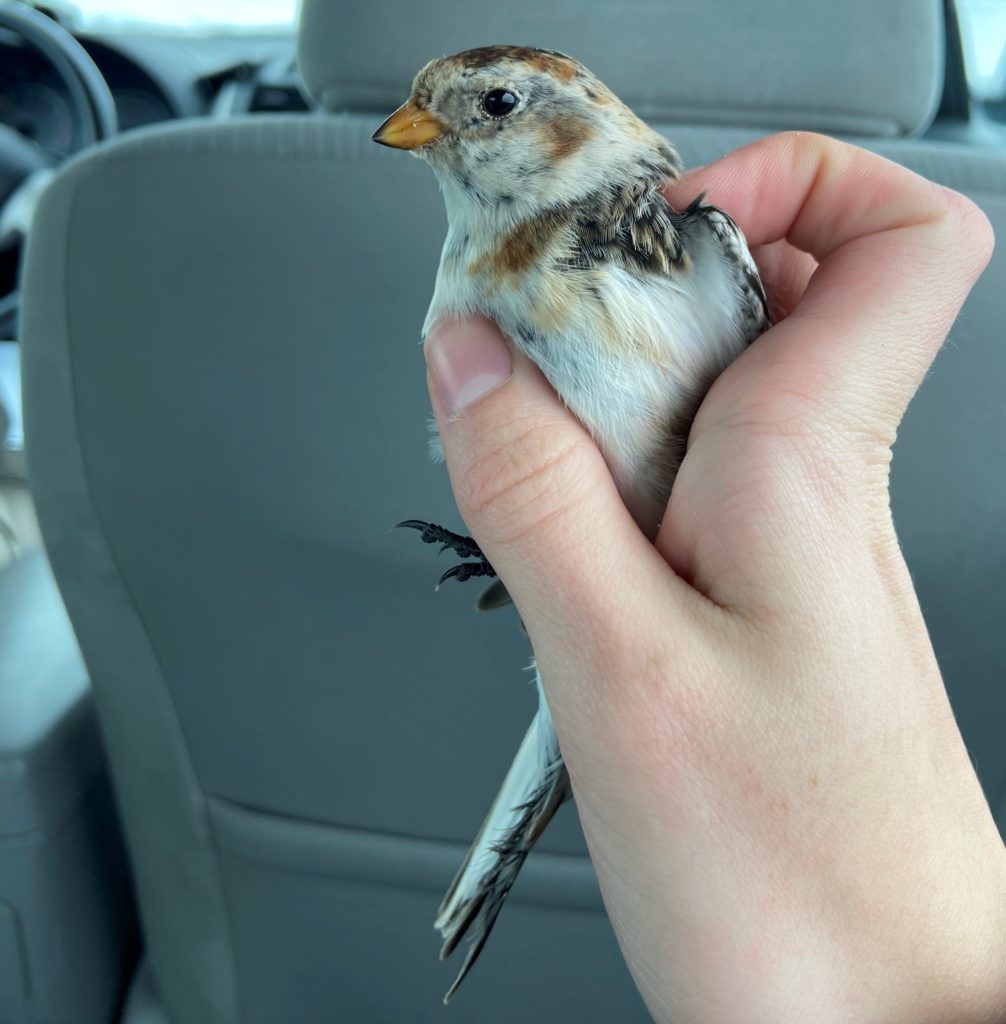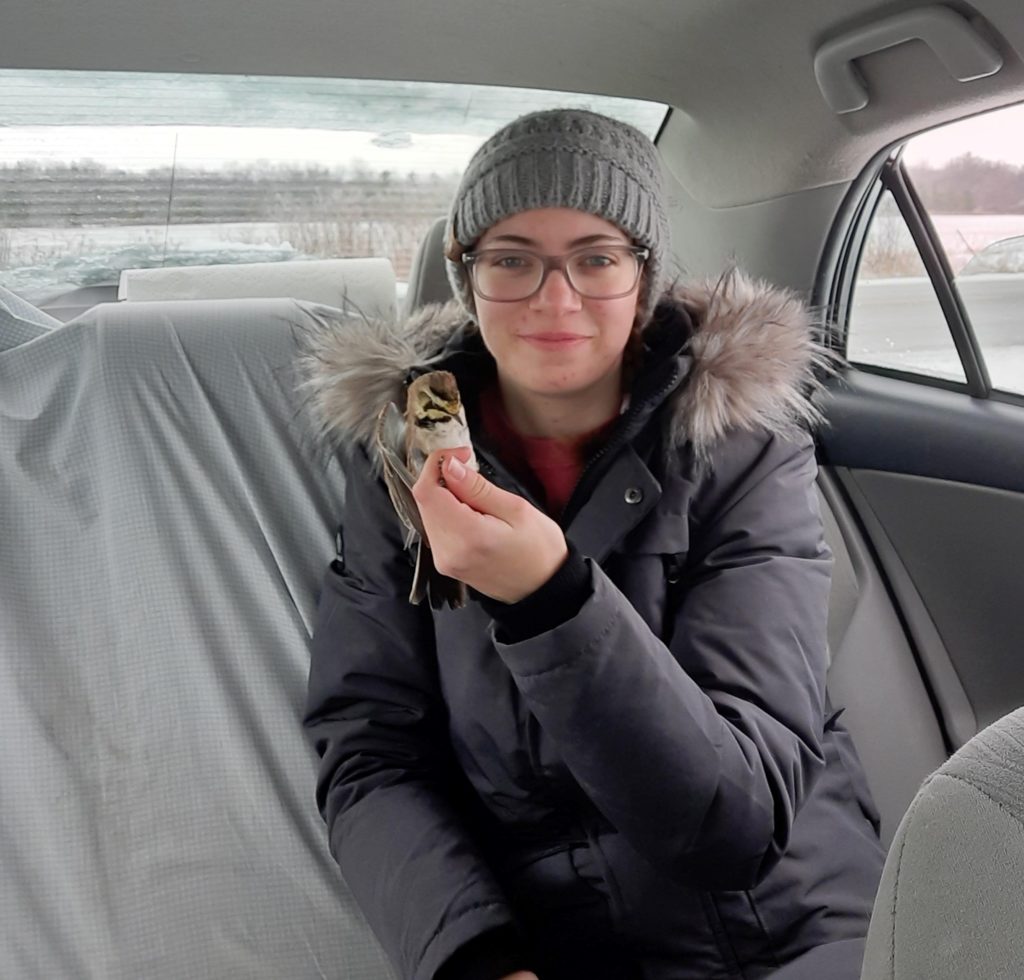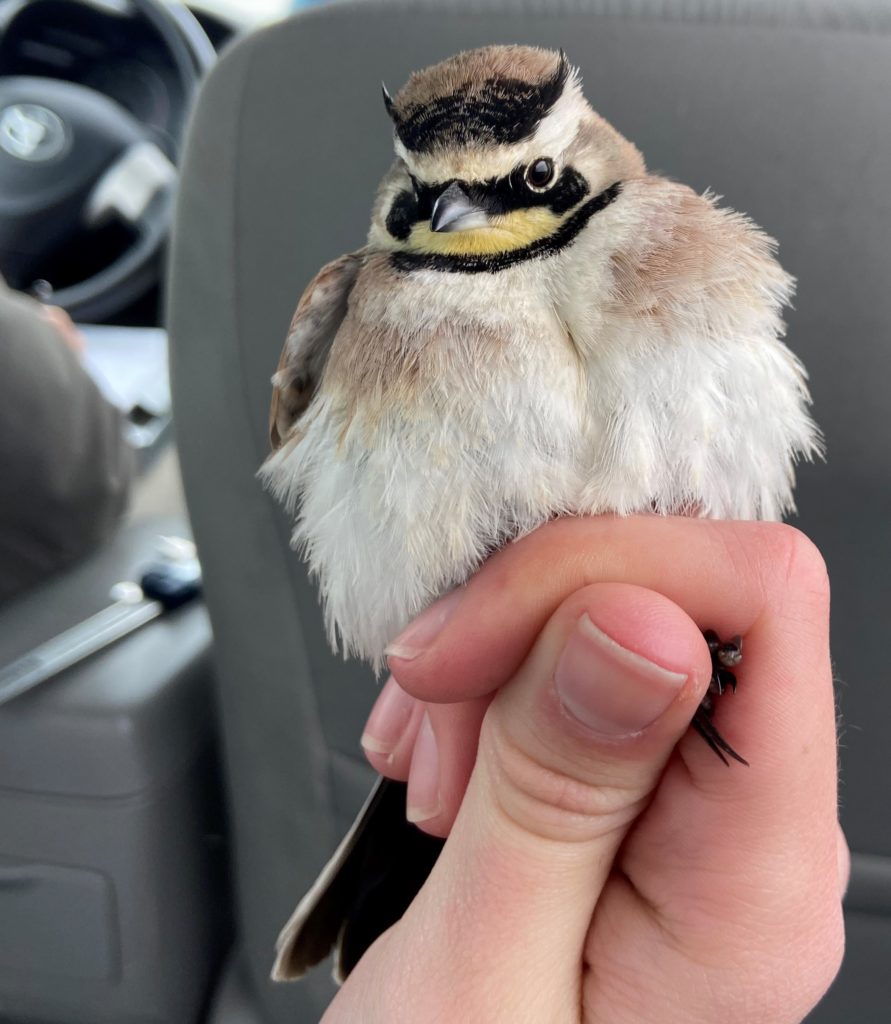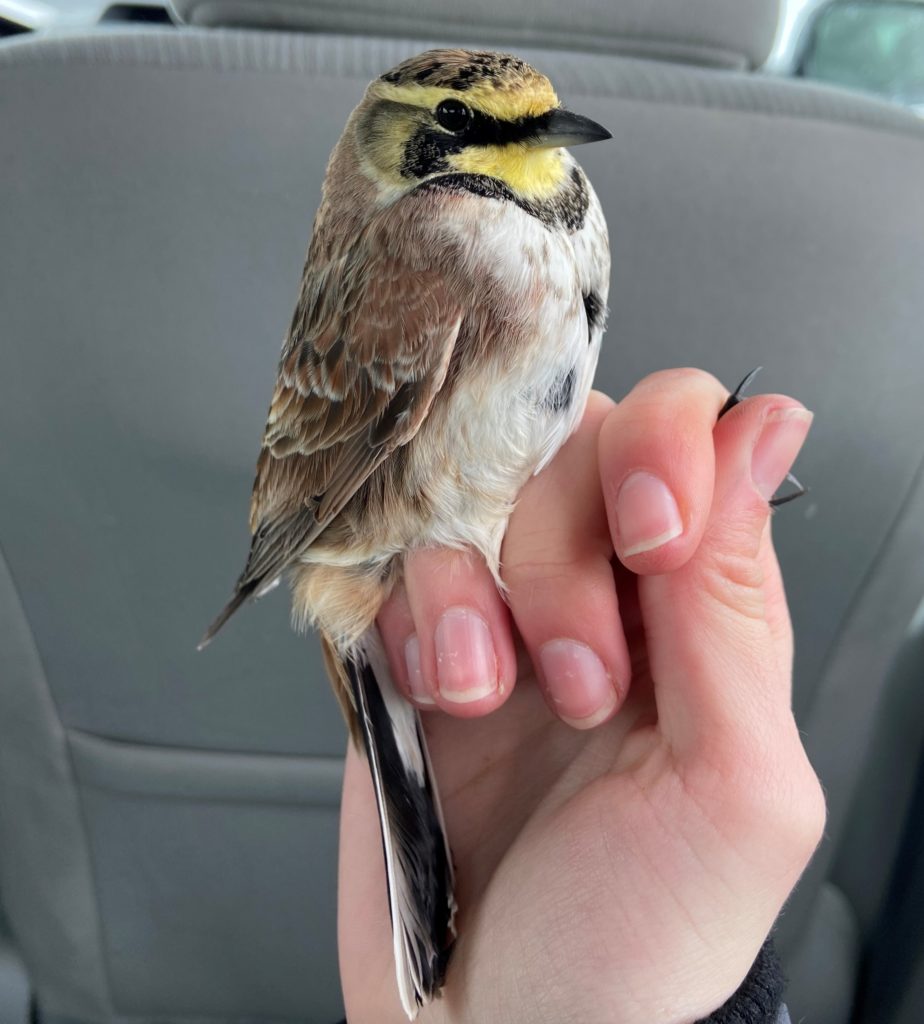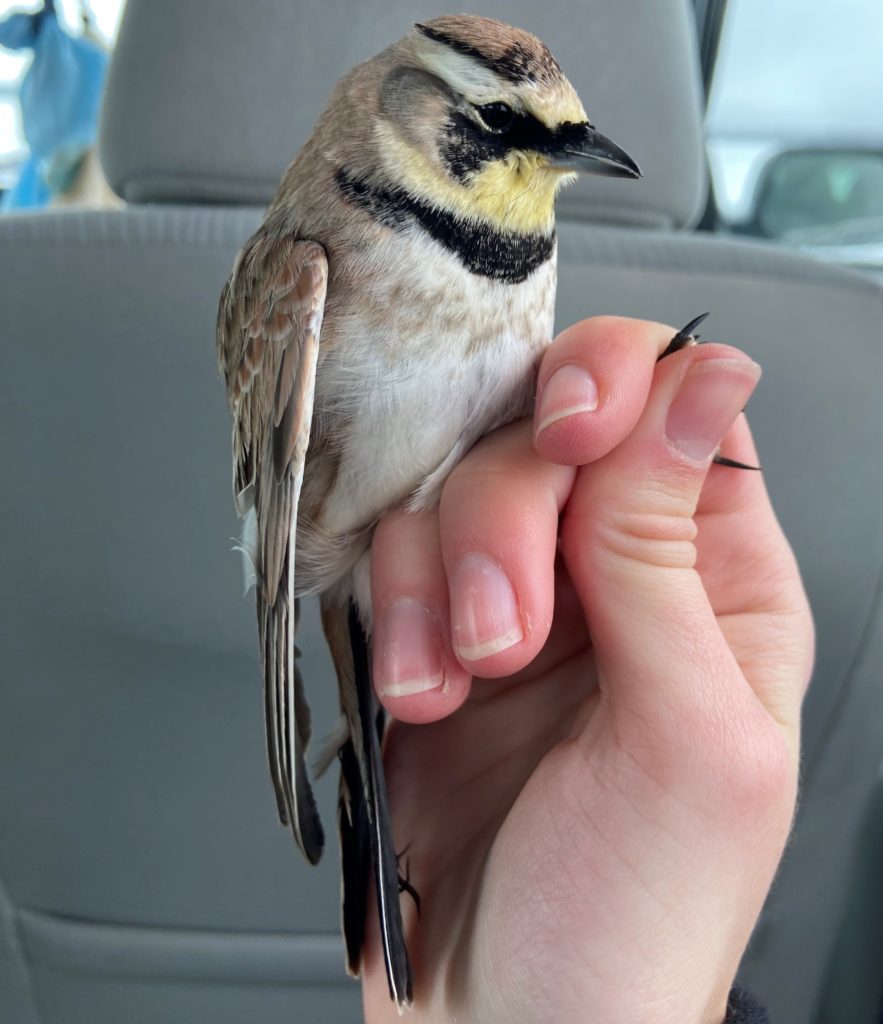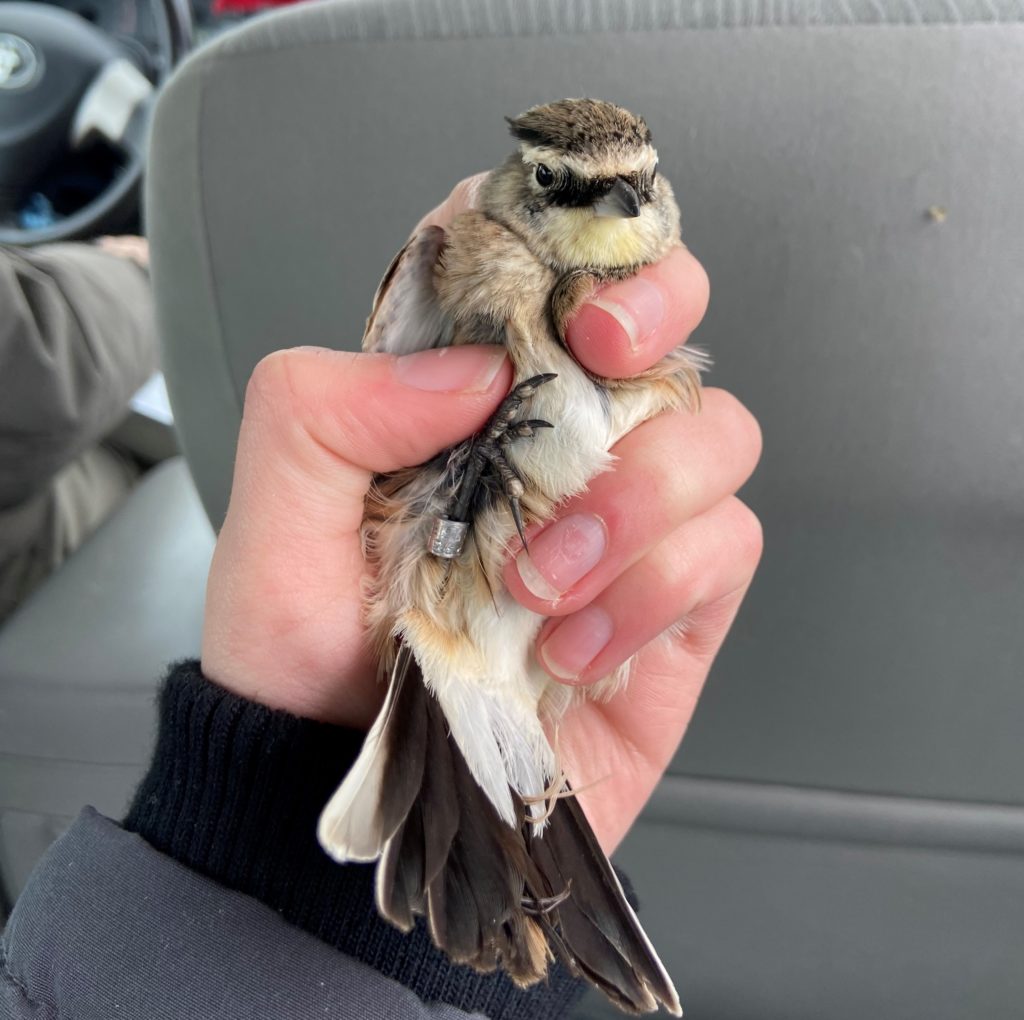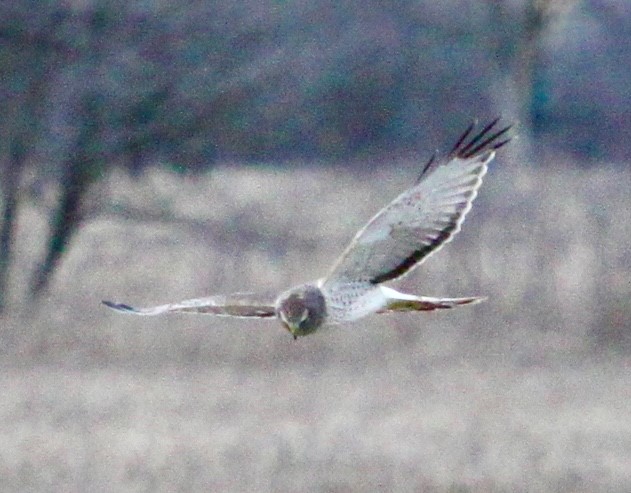I had pretty well given up on the Winter banding season: lots of unseasonably warm weather, no snow, and a general lack of Horned Larks and Snow Buntings – I hadn’t seen either in over 3 weeks. But the forecast was…interesting….so yesterday I made sure that the bait piles in my trapping area were topped up. (No need really as nothing had touched the corn for some time, not even pigeons). In doing so I noticed a lone Horned Lark at a pile. Hmmm….interesting, maybe ominous. But I was unprepared for the flock of 75+ Horned Larks that were at the site this morning! These birds have been widespread, foraging all over the countryside, but when the conditions got bad they descended on a known food source. And I don’t think this was just random or luck. As well as banding 33 new Horned Larks this morning, we also retrapped 10 that had been banded earlier in the season going back to December and, in one case, a bird that had been banded in January of 2022. These birds knew where to find food in a pinch.
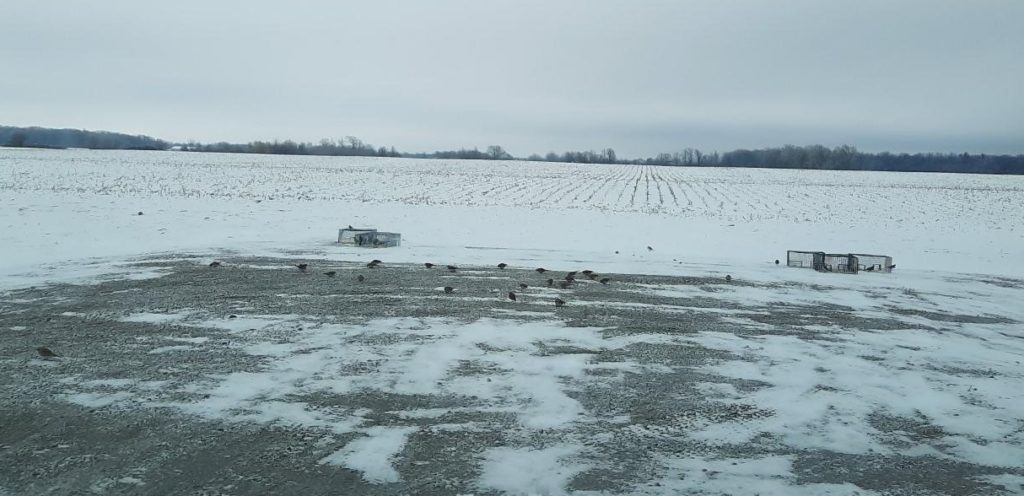
A stark morning. The birds split their time between the gravel pad (picking up grit to help digestion), the traps (grabbing whatever food they could – preferably outside them), and the field whenever they were startled (by passing traffic, Northern Harriers or banders leaving the car). -DOL
Perspective is an interesting thing. Many would view this morning’s weather as terrible: -5 C., bitter easterly wind, periods of sleet coating everything with ice. The sort of weather that drives many people to Florida or the Caribbean. But, if you’re a Winter bird enthusiast, these are conditions you actually look forward to!
It’s “reading week” at Ontario universities and this gave Sarah Sharp, our newest board member, a chance to get a taste of Winter bird banding. Evidently she hasn’t done any reading so this was a good activity for her. She did really well and I’ve started to convince her that Arctic birds might be a good way to go in the future as a member of C.R.A.P. (the Centre for Research on Arctic Passerines). This is the acronym for an organization that Dr. Oliver Love (at the U of Windsor) and I have come up with – due to climate change there is a significant shift going on of more southern birds finding their way into the Arctic…and we don’t know much about them or this phenomenon. Hence CRAP. [Last Spring Samuelle Simard-Provencal (U of Windsor) and I found American Robins and White-crowned Sparrows in Iqaluit and several years ago I had a Myrtle Warbler there.] But we’ve come to the realization that, although CRAP is a catchy acronym, maybe we will need to find another name/acronym if we’re looking for grants to fund the research. If you have any ideas we’d love to hear them!
There appear to be 2 subspecies of Horned Larks showing up at the site: Eremophila alpestris alpestris and E.a. praticola. The former is larger and its throat and face are yellow; the latter is smaller and throat and face are whitish although sometimes with a yellow “wash”. Take a look at the following pictures and try to pick them out. All the birds with a white supercilium were significantly smaller that the birds with a yellow one:
Karen Petrie was out birding on the weekend in rural Haldimand and came upon 6 Short-eared Owls and at least 20(!) Northern Harriers. These birds might be on the move. We had two harriers around the site this morning: one was a fly-by and the larks paid it little attention but one descended on the traps with birds inside and we had to hustle out of the car to keep them safe and send the harrier on its way.
Rick

